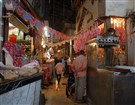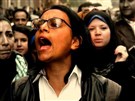Following two days of voting, vote counting began Thursday at nine pm in the election that will determine Egypt’s next president.
Unless one of the thirteen candidates achieves more than fifty percent of the vote, runoff elections are expected for 16 and 17 June. Polls conducted before voting began varied widely, with the election appearing to be a toss-up between five leading candidates.
The results are still extremely preliminary because votes are being counted and can later be appealed, but Egypt Independent reporters’ access to ten polling stations in scattered locations across the country provides some insight into Egypt’s possible future.
Hamdeen Sabbahi, a Nasserist candidate who enjoyed a last minute surge in recent days, appears to be doing well in poor neighborhoods in Cairo. In Basataeen, in the south of the capital city, Sabbahi took a lion’s share of the first 300 votes counted, with moderate Islamist candidate Abdel Moneim Abouel Fotouh coming in second, followed by the Muslim Brotherhood’s candidate Mohamed Morsy coming in third.
At the Nour Islamic School polling station in the informal Giza neighborhood Ard al-Lewa, Sabbahi took 104 votes, while Ahmed Shafiq, a member of the former regime, took seventy-eight. A campaign representative for Abouel Fotouh said that Sabbahi’s campaign had been particularly active in the area recently.
Morsy, widely expected to do well because of the Brotherhood’s strong organizational capabilities, has blown away his competition in Arish, the capital of North Sinai, where at one polling station he took 175 votes compared to Abouel Fotouh and former Foreign Minister Amr Moussa, who won sixty votes each.
In Sharqiya Governorate in the Nile Delta, Morsy also appears to be doing well. According to campaign officials there, the Brotherhood’s candidate is leading, followed by Shafiq.
At polling stations around the country, plastic ballot boxes are being unloaded by judicial officials, who then count out each vote individually while an assistant keeps tally on a lined piece of paper. The specifics, however, are varying widely across different polling stations.
At the largest polling station in Arish, the judge presiding over the polling station considers a ballot invalid if anything other than a check mark is written next to a candidate’s name. At a polling station in the middle class Cairo neighborhood of Sayeda Zeinab, however, the presiding judge considers any demonstration of a voter’s clear intention as a valid ballot. At the Ard al-Lewa polling station, any writing voids the ballot.
Meanwhile, stacking of ballot boxes took over an hour before voting began at a polling station in Old Cairo. At the Medina School in the Giza neighborhood of Dokki, the presiding judge is armed with a handgun.
In addition to judges and government employees acting as support staff, each campaign is allowed to have two representatives oversee the voting process, though only the leading campaigns appear to be represented everywhere. Accredited journalists and election observers are also present in some instances.
Voter turnout appeared to be lower than anticipated across the country.
At the Basataeen polling station, 2,300 of 3,300 eligible voters cast ballots. At the Abdel Moneim Riyadh School, the largest polling station in the Upper Egyptian city of Qena with over 200,000 voters, turnout is not expected to exceed 50 percent.
[This article originally appeared in Egypt Independent.]
![[Inside a polling station in Mahalla. Image originally posted to Flickr by Nehal El-Sherif.]](https://kms.jadaliyya.com/Images/357x383xo/7258113408_c846466892.jpg)





